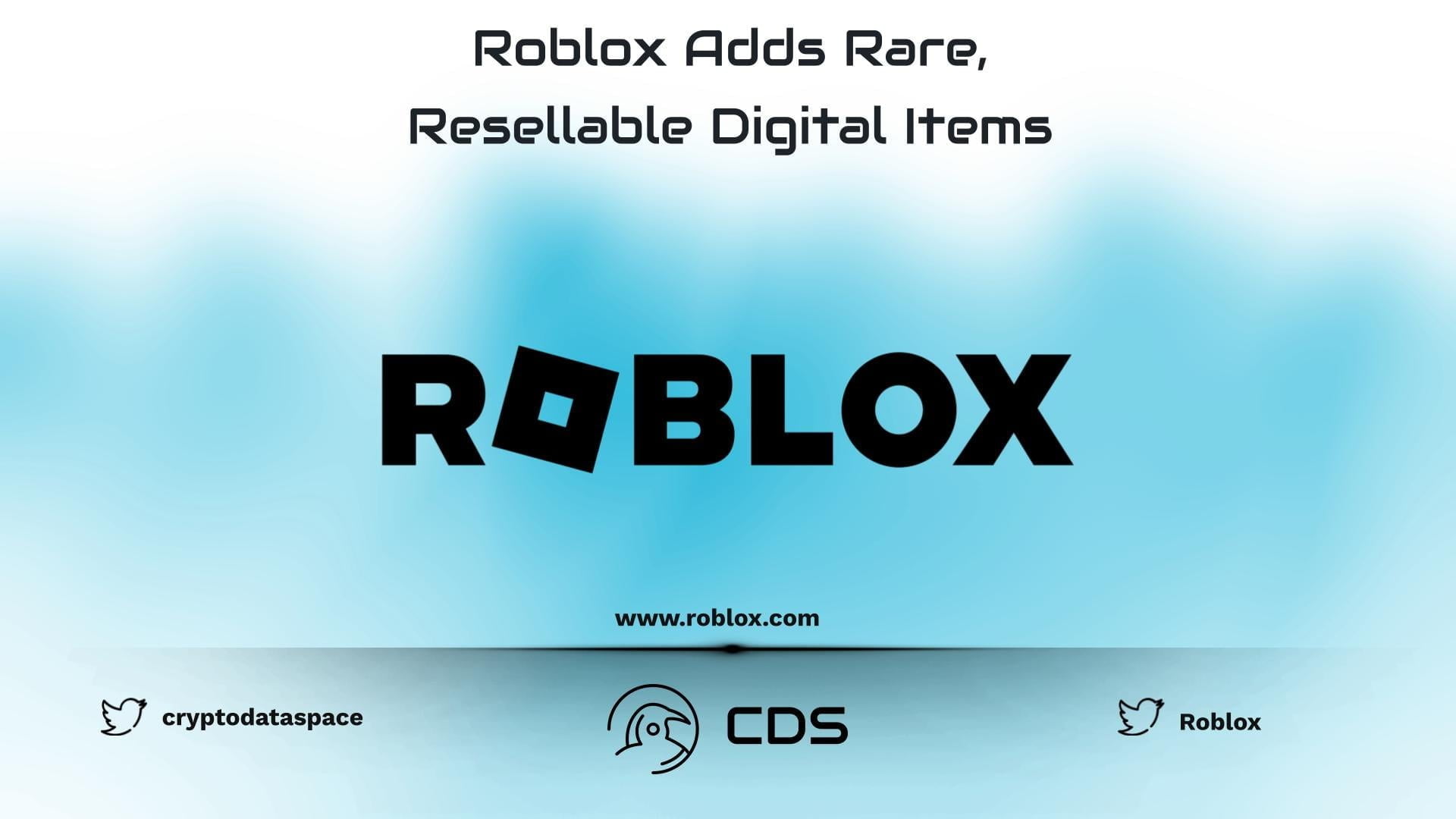New items of the popular game are released in limited quantities and can be resold for a fee. But Roblox doesn’t use NFT. It looks like an NFT, it is issued like an NFT and resold like an NFT. But alas, it isn’t one.

Roblox Adds Rare, Resellable Digital Items
Roblox, the dominant online gaming platform, recently introduced a new class of wearable virtual goods that can be sold in limited quantities by third-party retailers, according to a recent company announcement. Items designated as Limiteds can also be resold by Roblox users at any price, with 10% off each resale going to the original creator. Like NFT, virtual assets will be issued in limited numbers, using scarcity to support creators when they change hands in the future. This is the NFT’s promise, even as royalty controls have eased in recent months.
There’s only one major issue that separates Roblox Limiteds from NFTs, aside from the lack of Web3: they also can’t leave Roblox. Roblox Limiteds do not live on the blockchain. Instead, like other items previously released in unlimited quantities across the vast gaming ecosystem, they live and die within Roblox’s internal gameplay. Users can only access virtual assets published in-game by Roblox while playing.

While this key difference doesn’t set Roblox Limiteds apart from avatar skins in Roblox or Fortnite, the introduction of Roblox into a more dynamic NFT-like economic environment where developers and users can exploit scarcity and speculation marks a turning point for the hugely popular platform . In February, Roblox reported 67.3 million daily active users.
“Adding scarcity to our marketplace is a key element of creating healthy marketplace dynamics that benefit creators, buyers, and sellers alike,” the company said in the announcement.
To reduce the likelihood of developers using the new Limiteds category flooding the Robloх market with a myriad of items for quick wins, the company requires developers to add a piece of their skin to the game when a limited item or collection is released.
Creators must pay Robloх an upfront fee calculated based on the type of asset sold and the number of items published. Once the item is sold, this deposit will be returned to the creator. Given the well-known Web2 stranglehold Robloх has on its marketplace, the company’s profit-sharing model for Limiteds sales is significantly less generous than that of NFT marketplaces.
Robloх Limited’s innovation almost certainly indicates that the company’s management is paying close attention to the rapidly growing economy of NFT-backed virtual assets used in metaverse games like Decentraland and The Sandbox.
Developers of those games, however, have long drawn a line between the open, interoperable virtual worlds they are trying to bring to the masses—in which virtual goods can flow freely between platforms, thanks to the blockchain—and “walled garden” online ecosystems like RobIox and Fortnite, in which virtual goods remain captive on a single platform.
Robloх,however, isn’t the only Web2 company to embrace popular aspects of NFTs, such as digital scarcity, without actually deploying blockchain. DSTLRY, a newly introduced digital comics platform, also publishes limited edition digital comics for resale on its marketplace, with a percentage of each resale benefiting the creator of the comic. However, these comics also do not exist on the blockchain, so they cannot leave DSTLRY’s own platform.
Source
Check out more of our latest news here
















Leave a comment